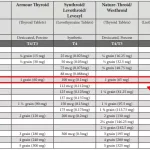A dry throat commonly results from a head cold, not drinking enough fluids, or sleeping with your mouth open. Many effective at-home remedies exist, but seek medical advice if symptoms persist beyond one week.
A scratchy, dry throat is a frequent complaint, particularly in the colder months when indoor air is dry and respiratory infections are more common.
Most of the time, a dry throat points to something minor, such as low humidity or a common cold. Evaluating your accompanying symptoms can help you figure out the cause and whether you need to consult a healthcare provider.
This article outlines ten frequent causes of a dry throat and available treatment approaches.

1. Dehydration
A parched throat may simply indicate you haven’t consumed enough fluids.
Dehydration can also arise from losing body fluids due to vomiting, diarrhea, heavy sweating, or increased urination.
When dehydrated, your body produces less saliva, which normally keeps your mouth and throat lubricated.
Other signs of dehydration include:
- dry mouth
- heightened thirst
- darker-colored urine and reduced urine output
- fatigue
- dizziness
Treatment options
Increase your fluid intake throughout the day. Recommendations vary, but a common guideline is about 15.5 cups of fluids daily for men and 11.5 cups for women.
One study indicates adults obtain a portion of their fluids from fruits, vegetables, and other foods. The water content of foods differs widely and influences daily intake.
Choose hydrating beverages such as water or electrolyte drinks, and limit caffeinated sodas and coffee, which can promote further fluid loss.
2. Sleeping with your mouth open
If you wake up with a dry mouth frequently, you might be breathing through your mouth while asleep. Overnight airflow evaporates the saliva that normally keeps your mouth and throat moist.
Mouth breathing can also cause:
- bad breath
- snoring
- daytime sleepiness
Snoring may indicate obstructive sleep apnea, a disorder where breathing repeatedly stops and starts at night.
Nasal congestion from a cold, chronic allergies, or structural issues like a deviated septum can encourage mouth breathing.
Treatment options
If congestion or sinus issues are the cause, nasal adhesive strips can help keep your nasal passages open during sleep. These strips are available online and at pharmacies.
For obstructive sleep apnea, clinicians may recommend an oral device that repositions the jaw or continuous positive airway pressure (CPAP) therapy to maintain airflow while you sleep.
Not everyone with sleep apnea requires an oral appliance or CPAP; treatment depends on symptom severity. Mild cases may be managed with lifestyle adjustments. Also, the tirzepatide for obstructive sleep apnea.
3. Hay fever or allergies
Hay fever, or seasonal allergies, occurs when the immune system overreacts to usually harmless environmental substances.
Frequent allergy triggers include:
- grass
- pollen
- pet dander
- mold
- dust mites
When exposed to a trigger, the immune system releases histamines.
This can produce symptoms such as:
- stuffy or runny nose
- sneezing
- itchy eyes, mouth, or skin
- cough
Nasal congestion can force you to breathe through your mouth, drying your throat. Excess mucus can also drip down the back of the throat (postnasal drip), causing soreness.
Treatment options
To limit allergy symptoms, avoid triggers as much as possible. It may help to:
- Stay indoors with windows closed and the AC running during peak allergy periods.
- Use dust mite–proof covers on mattresses and pillows.
- Wash bedding weekly in hot water.
- Vacuum and dust regularly to reduce dust mites.
- Run an air purifier and replace filters frequently; keep indoor humidity under 50%.
- Remove any mold growth in your home.
- Keep pets out of your bedroom.
Allergy symptoms can also be treated with:
- antihistamines
- decongestants
- allergy immunotherapy (shots)
- eye drops for allergic conjunctivitis
4. Cold
The common cold, caused by numerous viruses, can make your throat feel dry and scratchy.
You may also notice symptoms such as:
- stuffy or runny nose
- sneezing
- cough
- body aches
- mild fever
Treatment options
Colds typically resolve in a few days. Antibiotics do not help, as they target bacteria, not viruses.
To ease symptoms while your body recovers, consider these measures:
- Take OTC pain relievers like acetaminophen (Tylenol) or ibuprofen (Advil) for throat pain and aches.
- Suck throat lozenges.
- Drink warm beverages such as broth and herbal tea.
- Gargle with warm water mixed with 1/2 teaspoon of salt.
- Use a decongestant nasal spray for congestion relief.
- Increase fluid intake to keep your mouth and throat moist and prevent dehydration.
- Get adequate rest.
- Use a humidifier to add moisture to the air in your room.
5. Flu
Influenza is a viral respiratory illness. While it resembles a cold, flu symptoms are generally more intense.
Along with a sore, scratchy throat, you may experience:
- fever
- chills
- cough
- stuffy or runny nose
- muscle aches
- headache
- fatigue
- vomiting and diarrhea
The flu can lead to serious complications, particularly in young children, older adults, and people with chronic illnesses or weakened immune systems.
Potential complications include:
- pneumonia
- bronchitis
- sinus infections
- ear infections
- asthma exacerbations in people with asthma
Treatment options
Antiviral medications can shorten the duration and severity of the flu, but they must be started within 48 hours of symptom onset to be effective.
To manage symptoms while ill, try these steps:
- Rest until you feel better.
- Suck on throat lozenges.
- Gargle with warm water and 1/2 teaspoon salt.
- Take OTC pain relievers like ibuprofen (Advil) or acetaminophen (Tylenol) to reduce fever and ease body aches.
- Drink warm fluids, such as tea and broth.
6. Acid reflux or GERD
Gastroesophageal reflux disease (GERD) occurs when stomach acid backs up into the esophagus, the tube carrying food from the mouth to the stomach.
Acid can irritate the esophageal lining, causing symptoms like:
- a burning sensation in the chest (heartburn)
- difficulty swallowing
- dry cough
- regurgitation of sour liquid
- hoarseness
If stomach acid reaches the throat, it can cause pain or a burning sensation.
Treatment options
GERD treatments include:
- antacids (e.g., Maalox, Mylanta, Rolaids) to neutralize stomach acid
- H2 blockers (e.g., cimetidine/Tagamet HB, famotidine/Pepcid AC) to reduce acid production
- proton pump inhibitors (PPIs) (e.g., lansoprazole/Prevacid 24, omeprazole/Prilosec) to suppress acid production
Lifestyle adjustments that may reduce reflux include:
- Maintain a healthy weight; excess weight increases abdominal pressure and promotes reflux.
- Wear loose clothing to avoid abdominal pressure.
- Eat smaller, more frequent meals instead of large ones.
- Elevate the head of your bed to prevent nighttime acid backflow.
- Quit smoking, as tobacco weakens the valve that keeps acid in the stomach.
- Avoid foods and drinks that trigger heartburn, such as spicy or fatty foods, alcohol, caffeine, chocolate, mint, and garlic.
7. Strep throat
Strep throat is a bacterial infection of the throat. It often causes severe soreness, which can sometimes feel dry.
Other strep throat symptoms include:
- red, swollen tonsils
- white patches on the tonsils
- enlarged lymph nodes in the neck
- fever
- skin rash
- body aches
- nausea and vomiting
Treatment options
Doctors treat strep throat with antibiotics that kill the bacteria. Symptoms typically begin to improve within two days of starting treatment.
Complete the entire antibiotic course prescribed to fully eliminate the infection and prevent recurrence.
For symptomatic relief, use OTC pain relievers like ibuprofen (Advil) or acetaminophen (Tylenol), gargle with warm salt water, and suck throat lozenges.
8. Tonsillitis
Tonsillitis is inflammation of the tonsils — the two tissue masses at the back of the throat that help fight infections. Both viruses and bacteria can cause tonsillitis.
Besides a sore throat, tonsillitis may produce:
- red, swollen tonsils
- white patches on the tonsils
- fever
- enlarged lymph nodes in the neck
- hoarseness
- bad breath
- headache
Treatment options
If bacteria cause tonsillitis, antibiotics may be prescribed. Viral tonsillitis usually resolves on its own within 7–10 days.
To ease discomfort while recovering, try:
- Drinking plenty of fluids, with warm beverages like tea or broth offering soothing relief.
- Gargling several times daily with warm water mixed with 1/2 teaspoon of salt.
- Taking OTC pain relievers like acetaminophen (Tylenol) or ibuprofen (Advil).
- Using a cool-mist humidifier to add moisture to dry air.
- Sucking throat lozenges.
- Resting until you feel better.
9. Mononucleosis
Mononucleosis (mono) is a viral illness transmitted through saliva. A hallmark symptom is a sore, scratchy throat.
Other mono symptoms include:
- extreme tiredness
- fever
- swollen lymph nodes in the neck and armpits
- headache
- enlarged tonsils
Treatment options
Since mono is viral, antibiotics are ineffective. To support recovery, try these measures:
- Get ample rest to allow your immune system to fight the virus.
- Stay well-hydrated.
- Use OTC pain relievers such as acetaminophen (Tylenol) or ibuprofen (Advil) to reduce fever and soothe throat pain.
- Suck on lozenges and gargle with warm salt water for throat comfort.
10. Overuse of voice
Using your voice excessively — such as shouting at loud events — can irritate or inflame the vocal cords and may lead to laryngitis.
Other signs include:
- hoarseness
- a weak or lost voice
- a raw or sore throat
Treatment options
Viral laryngitis typically clears up on its own, often within two weeks. To help recovery:
- Rest your voice.
- Drink plenty of fluids, particularly warm tea or broth.
- Suck lozenges and gargle with warm salt water to ease throat discomfort.
- Take OTC pain relievers like acetaminophen (Tylenol) or ibuprofen (Advil) for pain relief.
When to see your doctor
Some cases improve with home care, but consult a doctor if symptoms persist longer than a week or worsen. A clinician can diagnose the cause and recommend appropriate treatment.
Seek medical attention sooner if you experience severe symptoms, such as:
- intense throat pain that makes swallowing difficult
- shortness of breath or wheezing
- skin rash
- chest pain
- extreme daytime fatigue
- very loud snoring at night
- fever above 101°F (38°C)
The takeaway
A dry throat most commonly signals a head cold, dehydration, or mouth breathing during sleep, especially in winter.
Simple home remedies—like sipping warm liquids such as broth or tea and using throat lozenges—can help. See a healthcare provider if symptoms persist or worsen after one week.
»MORE:Get an online treatment plan for your cold, flu, or sinus infection in as little as 15 minutes with Optum Now Online Care.Optum Now is operated by RVO Health. By clicking on this link, we may receive a commission. Learn more.


















Leave a Reply
You must be logged in to post a comment.